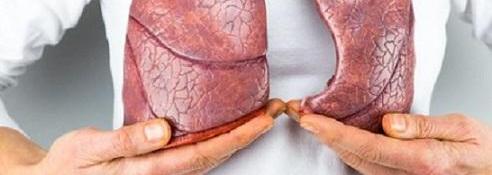As research from the American Cancer Society suggests, [1] lung cancer is the number one killer among cancers. On average, 14% of new cancer diagnoses are those of lung cancer. It’s incredibly lethal, and you must go to a doctor at the appearance of the first sign of it to have a chance at beating it. To notice the signs, you need to know what they are in the first place, and that is where our article comes in.

Warnings
Usually, the initial symptoms get disregarded by patients because they mimic symptoms caused by the common flu or fatigue. If you ever have any of the following symptoms persist for an extended amount of time, it might be wise to contact your doctor for a screening:
- A persistent cough.
- Wheezing.
- Feeling tired and weak.
- Chest pain that worsens when laughing, coughing, or breathing deeply.
- Bronchitis, pneumonia, or other infections that won’t go away.
- Coughing up blood.
If you suddenly start experiencing poor balance, seizures, jaundice, lumps near the skin surface or jaundice mixed with the above-mentioned symptoms, it may be a sign that the disease has dangerously evolved.
Diagnostics
Since, initially, lung cancer is growths in the lungs, scans are used to diagnose the disease. Afterward, blood and other tests can be used to confirm the diagnosis. Some of the scans used for diagnostics are:
- A Chest X-ray.
- Low-Dose CT. It’s proven to be more effective than chest X-rays, and to cut the mortality rates by 20%[2]. It gives an HD image of the lungs, which is useful for catching small growths in the early stages.
- MRI Scans.This method uses radio waves and powerful magnets to see whether cancer metastasized to the brain or the spinal cord.
- PET Scan. The rate of the absorption of the radioactive sugar by the cells reveals if there are cancerous cells and where they are.
- Bone Scan. A special radioactive material is injected into the blood, and it clings to the areas with the tumors on the bone.
- Bronchoscopy. A doctor injects a flexible tube through the patient’s trachea and into their lungs to check for any large growths or any other abnormalities that block the lungs.
Treatments
The most widely used treatments, often used in a combination, are:
- Surgery. If the pulmonary test shows enough healthy lung tissue will be left, the doctor can remove 1 or more of the five lobes. Alternatively, if the growth is too close to the center of the chest, the whole lung will be removed.
- Radiation Therapy. It uses radiation to shrink the growth.
- Radiofrequency Ablation. RFA uses high energy waves administered via a needle to destroy the tumors with heat.
- Chemotherapy. Special drugs are injected orally or intravenously to make the growth smaller before surgery or to kill the remnants post-surgery.
- Immunotherapy. Typically used to improve the patient’s immune system or to ameliorate the side effects of other treatments.
- Targeted Therapy. TT is a method with many iterations. The basic idea is to use drugs to inhibit certain behaviors of the disease that help it grow.
Among all the types of cancer listed above, Cancer.org [3] states that lung cancer holds a high spot, no matter if you’re a man or woman. According to the same source, [4] about 13% of new cancer diagnoses belong to lung cancer. Chances of falling prey to this disease are about 1 in 15, but they increase significantly for smokers.
If you’re suspicious, visit your doctor immediately. As with many things, better safe than sorry.
[1]https://www.cancer.org/cancer/non-small-cell-lung-cancer/about/key-statistics.html
[2]https://www.ncbi.nlm.nih.gov/pubmed/29425790
[3]https://www.cancer.org/cancer/non-small-cell-lung-cancer/about/key-statistics.html
[4]https://www.cancer.org/cancer/non-small-cell-lung-cancer/about/key-statistics.html
